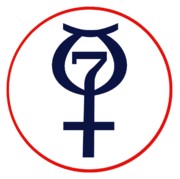|
Project Mercury was the first human spaceflight program of the United States, running from 1958 through 1963. An early highlight of the Space Race, its goal was to put a man into Earth orbit and return him safely, ideally before the Soviet Union. Taken over from the U.S. Air Force by the newly created civilian space agency NASA, it conducted twenty-five unmanned developmental flights (some using animals), and six successful flights by astronauts. The program, which took its name from Roman mythology, cost $277 million in 1965 US dollars, and involved the work of 2 million people. The astronauts were collectively known as the "Mercury Seven", and each spacecraft was given a name ending with a "7" by its pilot.
|
|

|
[
Launches |
Astronauts
]
| Mission |
Call-sign |
Pilot |
Launch time |
Launch site |
Duration |
Orbits |
Apogee
mi (km) |
Perigee
mi (km) |
Max. velocity
mph (km/h) |
Miss
mi (km) |
| Mercury-Redstone 3 |
Freedom 7 |
Alan Bartlett Shepard, Jr. |
14:34 on May 5, 1961 |
Launch Complex-5 |
15 m 22 s |
0 |
117 (188) |
— |
5,134 (8,262) |
3.5 (5.6) |
| Mercury-Redstone 4 |
Liberty Bell 7 |
Virgil Ivan "Gus" Grissom |
12:20 on July 21, 1961 |
Launch Complex-5 |
15 m 37 s |
0 |
118 (190) |
— |
5,168 (8,317) |
5.8 (9.3) |
| Mercury-Atlas 6 |
Friendship 7 |
John Herschel Glenn, Jr. |
14:47 on February 20, 1962 |
Launch Complex-14 |
4 h 55 m 23 s |
3 |
162 (261) |
100 (161) |
17,544 (28,234) |
46 (74) |
| Mercury-Atlas 7 |
Aurora 7 |
Malcolm Scott Carpenter |
12:45 on May 24, 1962 |
Launch Complex-14 |
4 h 56 m 5 s |
3 |
167 (269) |
100 (161) |
17,549 (28,242) |
248 (400) |
| Mercury-Atlas 8 |
Sigma 7 |
Walter Marty "Wally" Schirra, Jr. |
12:15 on October 3, 1962 |
Launch Complex-14 |
9 h 13 m 15 s |
6 |
176 (283) |
100 (161) |
17,558 (28,257) |
4.6 (7.4) |
| Mercury-Atlas 9 |
Faith 7 |
Leroy Gordon "Gordo" Cooper, Jr. |
13:04 on May 15, 1963 |
Launch Complex-14 |
1 d 10 h 19 m 49 s |
22 |
166 (267) |
100 (161) |
17,547 (28,239) |
5.0 (8.1) |
|
|
Donald Kent "Deke" Slayton |
|
|
|
|
|
|
|
|
|
